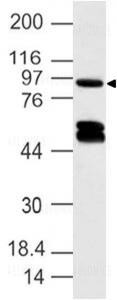Cookie preferences
This website uses cookies, which are necessary for the technical operation of the website and are always set. Other cookies, which increase the comfort when using this website, are used for direct advertising or to facilitate interaction with other websites and social networks, are only set with your consent.
Configuration
Technically required
These cookies are necessary for the basic functions of the shop.
"Allow all cookies" cookie
"Decline all cookies" cookie
CSRF token
Cookie preferences
Currency change
Customer-specific caching
FACT-Finder tracking
Individual prices
Selected shop
Session
Comfort functions
These cookies are used to make the shopping experience even more appealing, for example for the recognition of the visitor.
Note
Show the facebook fanpage in the right blod sidebar
Statistics & Tracking
Affiliate program
Conversion and usertracking via Google Tag Manager
Track device being used

| Item number | Size | Datasheet | Manual | SDS | Delivery time | Quantity | Price |
|---|---|---|---|---|---|---|---|
| ABE-11-10012-25 | 25 µg | - |
3 - 11 business days* |
134.00€
|
If you have any questions, please use our Contact Form.
You can also order by e-mail: info@biomol.com
Larger quantity required? Request bulk
You can also order by e-mail: info@biomol.com
Larger quantity required? Request bulk
Dapper homolog 1 (DACT1) is a cytoplasmic protein and a member of DACT family. It is an important... more
Product information "Anti-Dapper homolog 1"
Dapper homolog 1 (DACT1) is a cytoplasmic protein and a member of DACT family. It is an important regulator in the planar cell polarity (PCP) pathway. DACT1 interacts and posttranslationally regulates central PCP components Dvl2 and Vangl2 and modulates PCP downstream of the Rac1/JNK cascade. The gene for DACT1 is located at chromosome 14q22.3, which encodes a 836 amino acid protein with a putative leucine zipper (LZ) domain in the amino-terminal end and a consensus PDZ binding (PDZ-B) motif in the carboxy-terminal end that allows the DACT1 protein to interact with the Dishevelled (Dvl) PDZ domain. DACT1 is an important positive regulator in colon cancer through regulating the stability and sublocation of Beta-catenin. The overexpression of DACT1 leads to the increased accumulation of nonphosphorylated Beta-catenin in the cytoplasm and particularly in the nuclei.It interacts with GSK-3beta and beta-catenin and stabilizes it via DACT1-induced effects on GSK-3beta which directly interacts with beta-catenin proteins. This interaction identifies DACT1 as an important positive regulator in colon cancer and suggests a potential strategy for the therapeutic control of the beta-catenin-dependent pathway. Protein function: Involved in regulation of intracellular signaling pathways during development. Specifically thought to play a role in canonical and/or non-canonical Wnt signaling pathways through interaction with DSH (Dishevelled) family proteins. The activation/inhibition of Wnt signaling may depend on the phosphorylation status. Proposed to regulate the degradation of CTNNB1/beta-catenin, thereby modulating the transcriptional activation of target genes of the Wnt signaling pathway. Its function in stabilizing CTNNB1 may involve inhibition of GSK3B activity. Promotes the membrane localization of CTNNB1. The cytoplasmic form can induce DVL2 degradation via a lysosome- dependent mechanism, the function is inhibited by PKA-induced binding to 14-3-3 proteins, such as YWHAB. Seems to be involved in morphogenesis at the primitive streak by regulating VANGL2 and DVL2, the function seems to be independent of canonical Wnt signaling and rather involves the non-canonical Wnt/planar cell polarity (PCP) pathway. The nuclear form may prevent the formation of LEF1:CTNNB1 complex and recruit HDAC1 to LEF1 at target gene promoters to repress transcription thus antagonizing Wnt signaling. May be involved in positive regulation of fat cell differentiation. During neuronal differentiation may be involved in excitatory synapse organization, and dendrite formation and establishment of spines. [The UniProt Consortium]
| Keywords: | Anti-DPR1, Anti-DACT1, Anti-hDPR1, Anti-Dapper homolog 1, Anti-Dapper antagonist of catenin 1, Anti-Hepatocellular carcinoma novel gene 3 protein, Polyclonal Antibody to Dapper homolog 1 |
| Supplier: | Abeomics |
| Supplier-Nr: | 11-10012-25 |
Properties
| Application: | WB |
| Antibody Type: | Polyclonal |
| Conjugate: | No |
| Host: | Rabbit |
| Species reactivity: | human |
| Immunogen: | A partial length recombinant Dapper homolog 1 protein (amino acids 645-820) was used as the immunogen for this antibody. |
| Format: | Purified |
Database Information
| KEGG ID : | K22154 | Matching products |
| UniProt ID : | Q9NYF0 | Matching products |
| Gene ID | GeneID 51339 | Matching products |
Handling & Safety
| Storage: | -20°C |
| Shipping: | +4°C (International: +4°C) |
Caution
Our products are for laboratory research use only: Not for administration to humans!
Our products are for laboratory research use only: Not for administration to humans!
Information about the product reference will follow.
more
You will get a certificate here
Viewed



